Device groups
Introduction
The device group function has been available in Relution since version 5.21.0. This allows devices to be automatically assigned to groups based on various device properties. The device groups can then be used to assign policies that are delivered automatically.
Activation
Currently, the device groups feature must be enabled manually. This can be done via Settings → Device Management → Migration of Device Groups. The associated policy assignment to device groups cannot be undone.
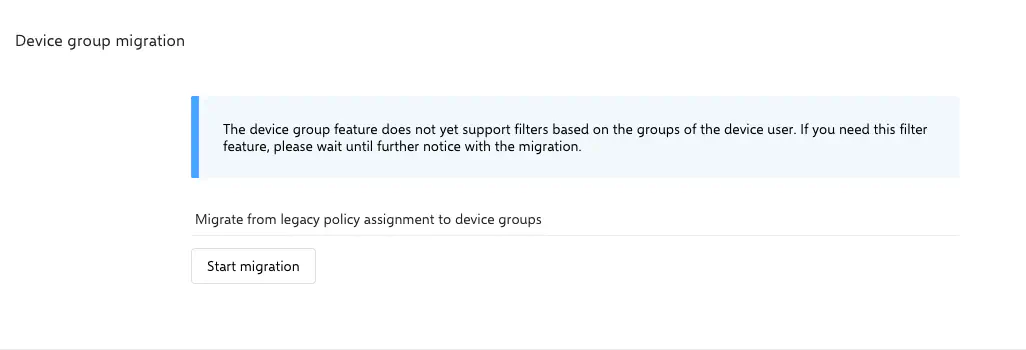
After clicking on Start Migration, a message about the upcoming changes will be displayed.
Read it carefully and click on Next.
In the following dialog, you can finally execute the migration.
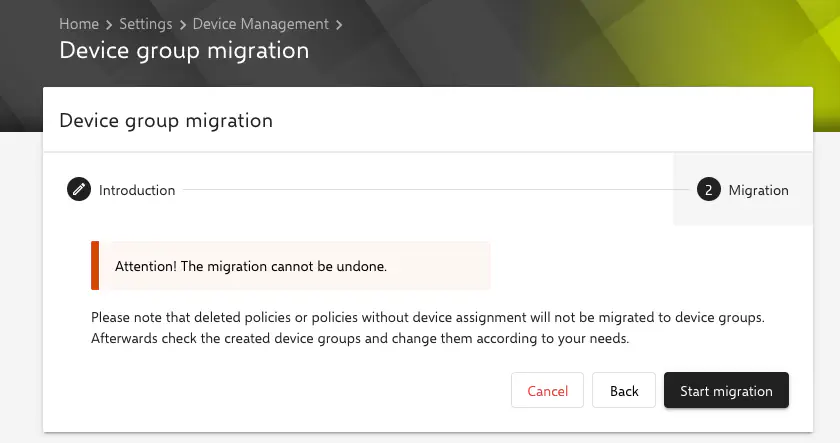
Device Groups
After the migration has been successfully executed, you will be automatically redirected to the newly appeared menu item Devices → Device Groups.
Here, you will find an overview of the automatically created groups and you can create new groups.
A device group is a link between devices and policies. This link can be created either manually or automatically based on certain device properties.
If the device groups function is activated, a link between devices and policies can only be created via this function. Direct linking is no longer possible.
Creating new device groups
To create a new device group, click on Add. Assign a name and (optionally) a description for the group.
You can also choose the Type of group. Here the options Static and Dynamic are available.
Static groups
Static groups allow manual linking between devices and policies.
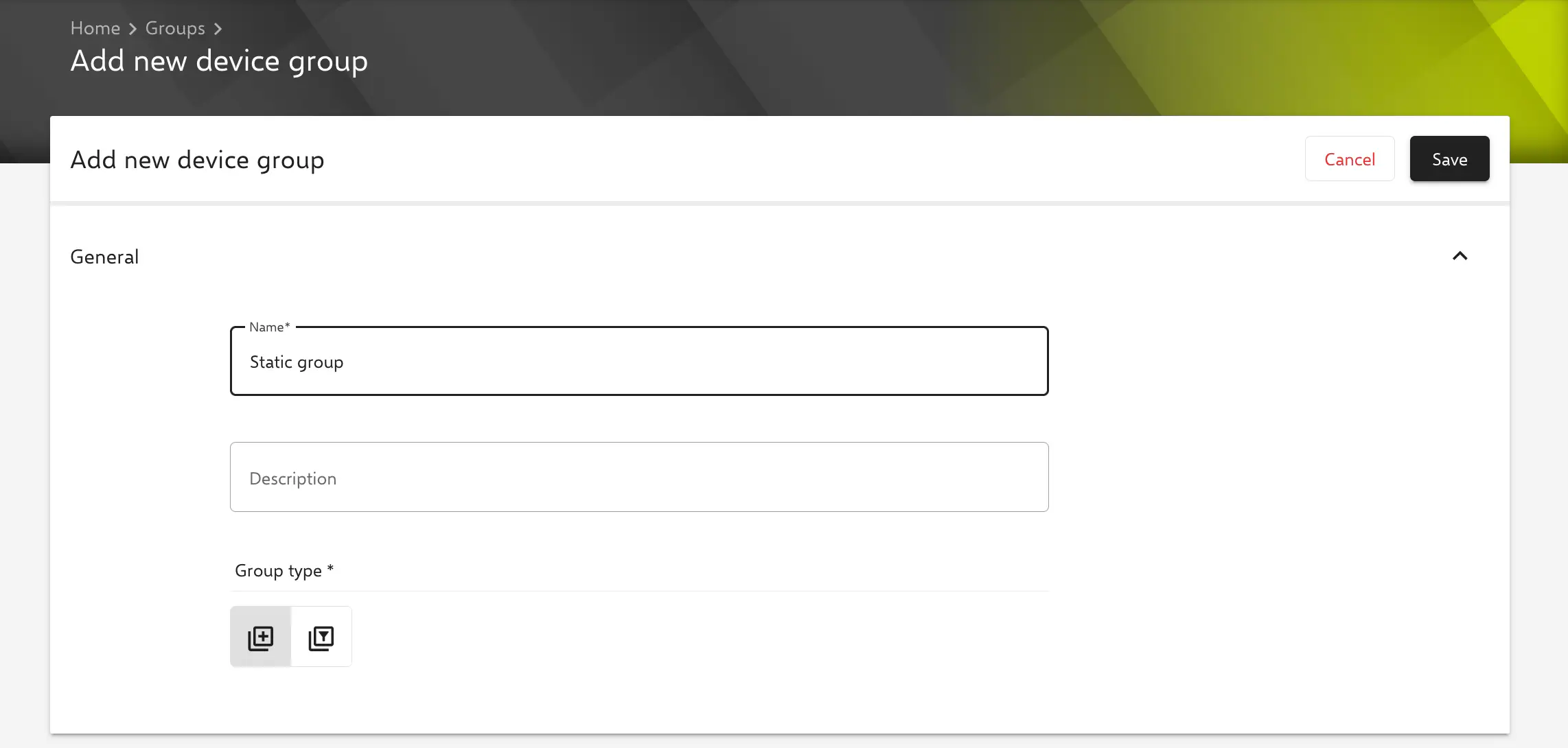
After the group is created, devices and policies can be added. Only policies that have been previously published, can be linked.
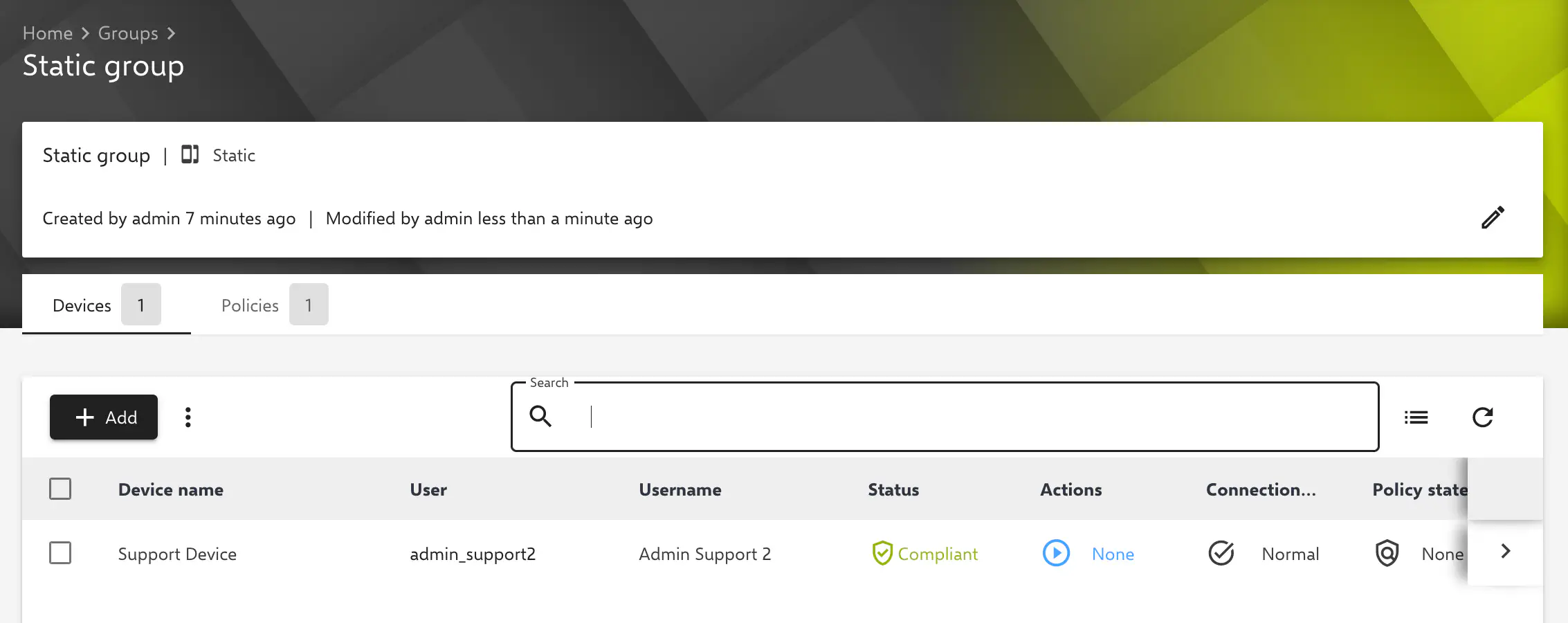
Dynamic groups
In dynamic groups, filters must be defined based on which devices are automatically assigned to the group. This happens in the background in real time. There is no direct manual influence on the content of these groups.
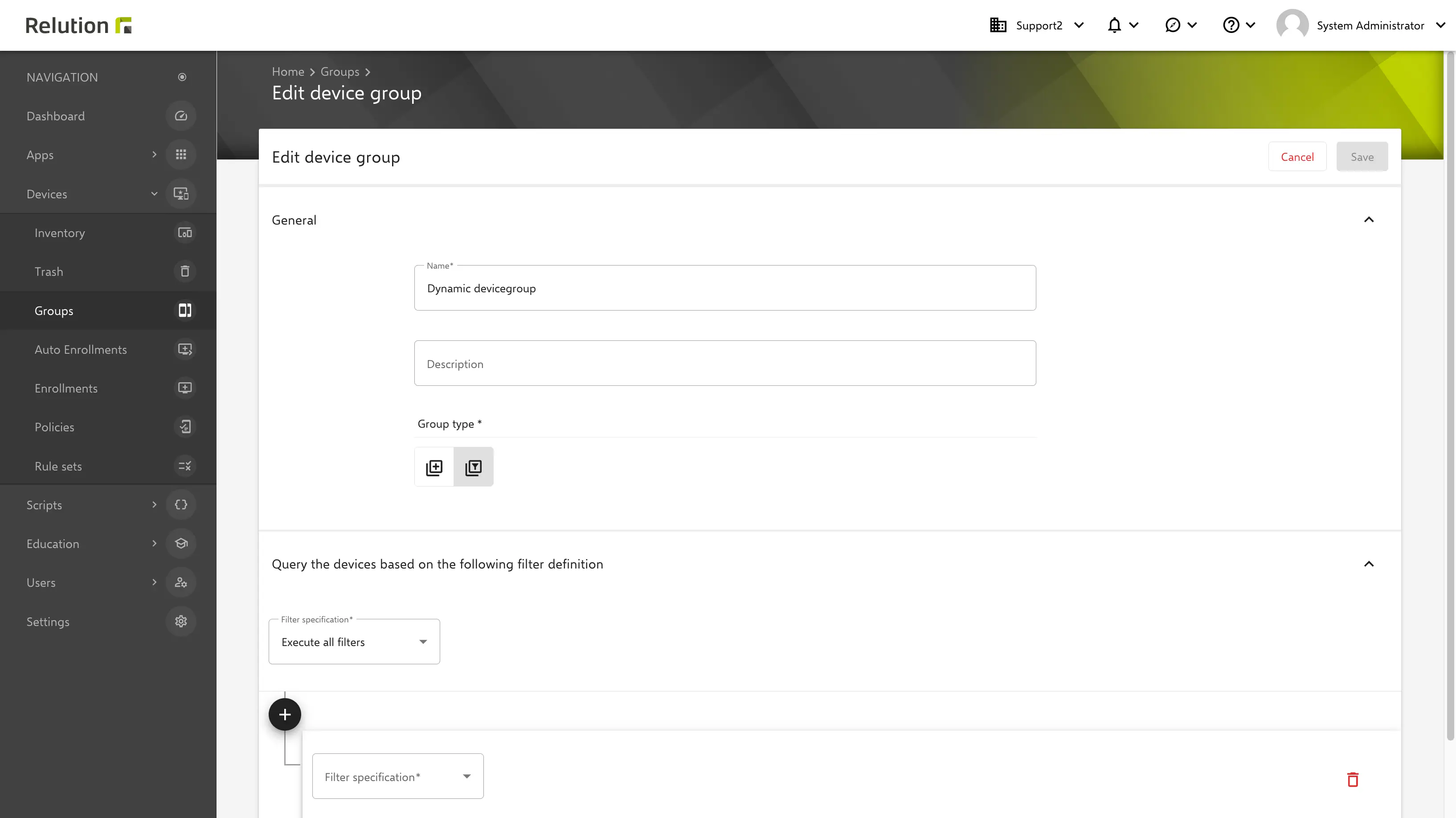
This is a complex tool that requires concentration to operate. Careless actions can quickly lead to undesirable results. Use the dynamic groups with caution for infrastructural policies. Make sure, for example, that no WiFi policy is revoked when the device status changes.
The filter specifications AND as well as OR are available for configuring the filters.
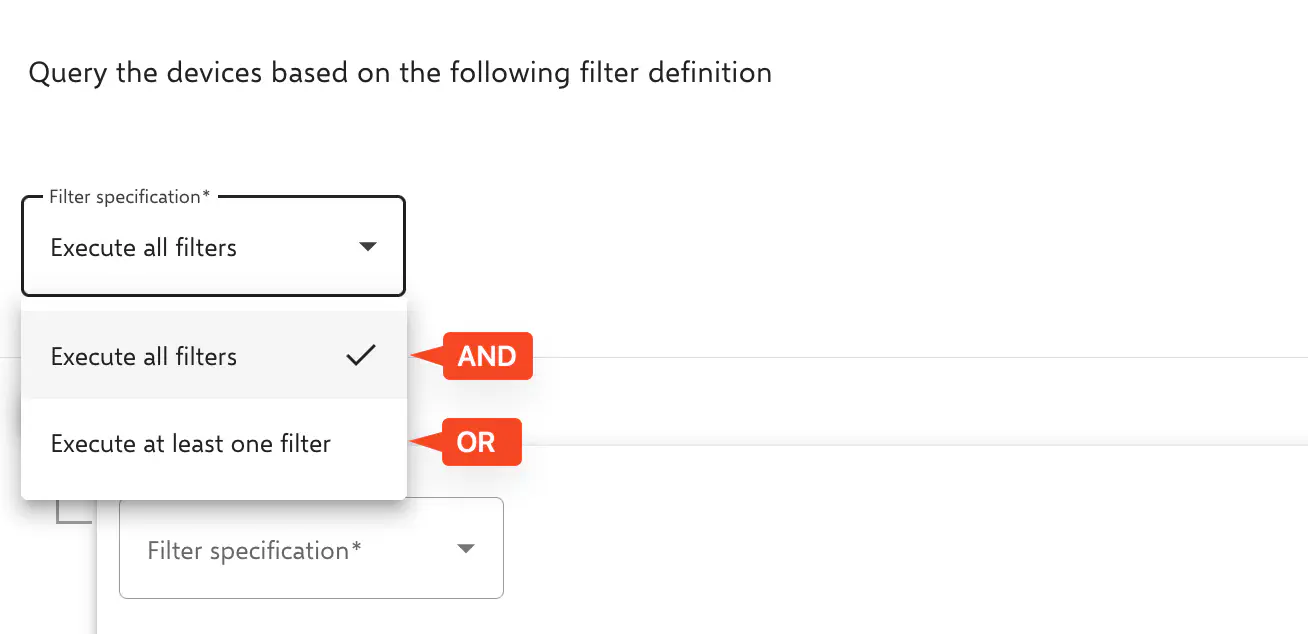
In the example, a filter has been defined from several properties and filter specifications.

The filter integrates the following devices:
- The linked user must be a member of the
Appstore Usergroup.
OR
- The device name is not
TEST.
OR
- The description does not contain
New Device.
AND
- The user is not
Admin Support 2.
Alternatively, you could describe the filter like this:
Groups = _SUPPORT2 Appstore User OR Device name NOT TEST.
OR (description does NOT include new device AND user is not Admin Support 2)
The filter specifications behave like ordinary logical functions.
For example, to avoid accidents, you can also add the serial number of a single device as a fixed filter value to really apply the policy only to that device and check if the result is as expected.
Duplicate Device Groups
As of Relution 5.33, device groups can be duplicated to enable faster and more convenient management.
To do this, one or more desired device groups can be selected under Navigation → Devices → Device Groups and duplicated via the 3-dot menu. A query will follow asking what should be duplicated from the original device group.
The following options are available:
- Including device group actions
- Including devices
- Including policies
Dynamic Device Groups with Group Filter from Relution 5.33
As of version 5.33, Relution supports the use of device groups as filters within dynamic device groups.
This allows existing static or dynamic groups to be used as conditions in new groups – either to include or specifically exclude devices.
To use this filter type, select Device Group under the query category and add at least one existing device group as a condition.
Advantages of the Group Filter
- More precise target group formation, e.g.,
all iPads except test devices - Less maintenance effort, as policies no longer need to be manually duplicated
- Clearer management of policies, profiles, and actions
With the new filter type, you can include or explicitly exclude one or more other device groups within a dynamic group.
For example, a test group can easily be filtered out of a dynamic production group without the need to configure additional criteria.
Note:
- Working with dynamic device groups requires careful planning:
- Avoid creating mutually dependent groups
- Do not accidentally remove critical baseline configurations, such as
Wi-Fi profiles- Always test policy changes with pilot devices first
- Misconfigurations can otherwise lead to unwanted device loss from groups or even endless loops.